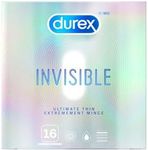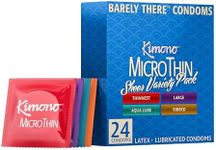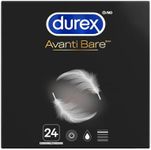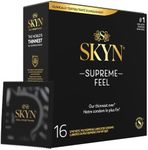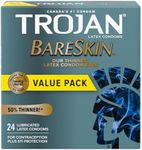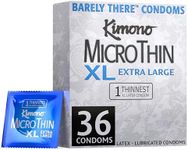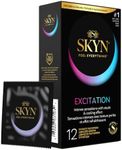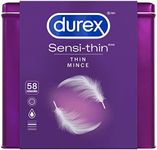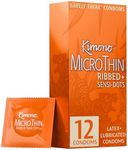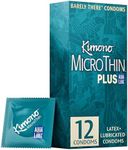Buying Guide for the Best Thinnest Condoms
When choosing the thinnest condoms, your main goal is to maximize sensitivity and feel during use, while still ensuring safety and protection. Thinner condoms are designed to provide a more natural sensation, but it's important to balance thinness with reliability and comfort. Understanding the key specifications will help you select a condom that fits your needs and preferences, ensuring both pleasure and peace of mind.ThicknessThickness refers to how thin the condom material is, usually measured in millimeters. This is the most important spec when looking for the thinnest condoms, as a lower thickness value means a thinner condom and potentially more sensitivity. Thickness can range from about 0.03mm (very thin) to 0.07mm (standard). If you want the most natural feel, look for condoms in the 0.03-0.04mm range. However, if you are concerned about breakage or want extra reassurance, you might prefer something slightly thicker. Your comfort with thinness should guide your choice—if you are new to thin condoms, you might start with a mid-range thickness and adjust as you gain experience.
MaterialCondoms are made from different materials, such as latex, polyisoprene, and polyurethane. The material affects both the thinness and the feel. Latex is the most common and can be made very thin, but some people have allergies. Polyurethane and polyisoprene are good alternatives for those with latex sensitivities and can also be made quite thin, though they may feel slightly different. If you have allergies or sensitivities, choose a non-latex option. Otherwise, focus on the material that feels best for you and is compatible with your needs.
Size (Length and Width)Size includes both the length and width (or nominal width) of the condom. A proper fit is crucial for both comfort and safety, especially with thinner condoms. Condoms that are too tight may break more easily, while those that are too loose may slip off. Sizes are usually labeled as regular, snug, or large, but checking the actual measurements is best. To pick the right size, consider your own measurements and choose a condom that matches closely. A good fit will help you get the most out of a thin condom’s sensitivity.
LubricationLubrication refers to whether the condom comes pre-lubricated and what type of lubricant is used. Thinner condoms can sometimes feel drier, so lubrication is important for comfort and to reduce the risk of breakage. Some condoms have extra lubrication, while others are unlubricated for those who prefer to use their own. If you want a smoother experience, look for condoms with extra or specialized lubrication. If you have sensitivities or want to use a specific lubricant, choose accordingly.
Strength and Safety StandardsEven the thinnest condoms must meet safety standards to ensure they are reliable. This spec refers to the testing and certifications the condom has passed. All reputable condoms will meet international safety standards, but it’s good to check for this assurance, especially when going for ultra-thin options. If safety is a top concern, make sure the product is certified and tested, so you can enjoy thinness without worry.
